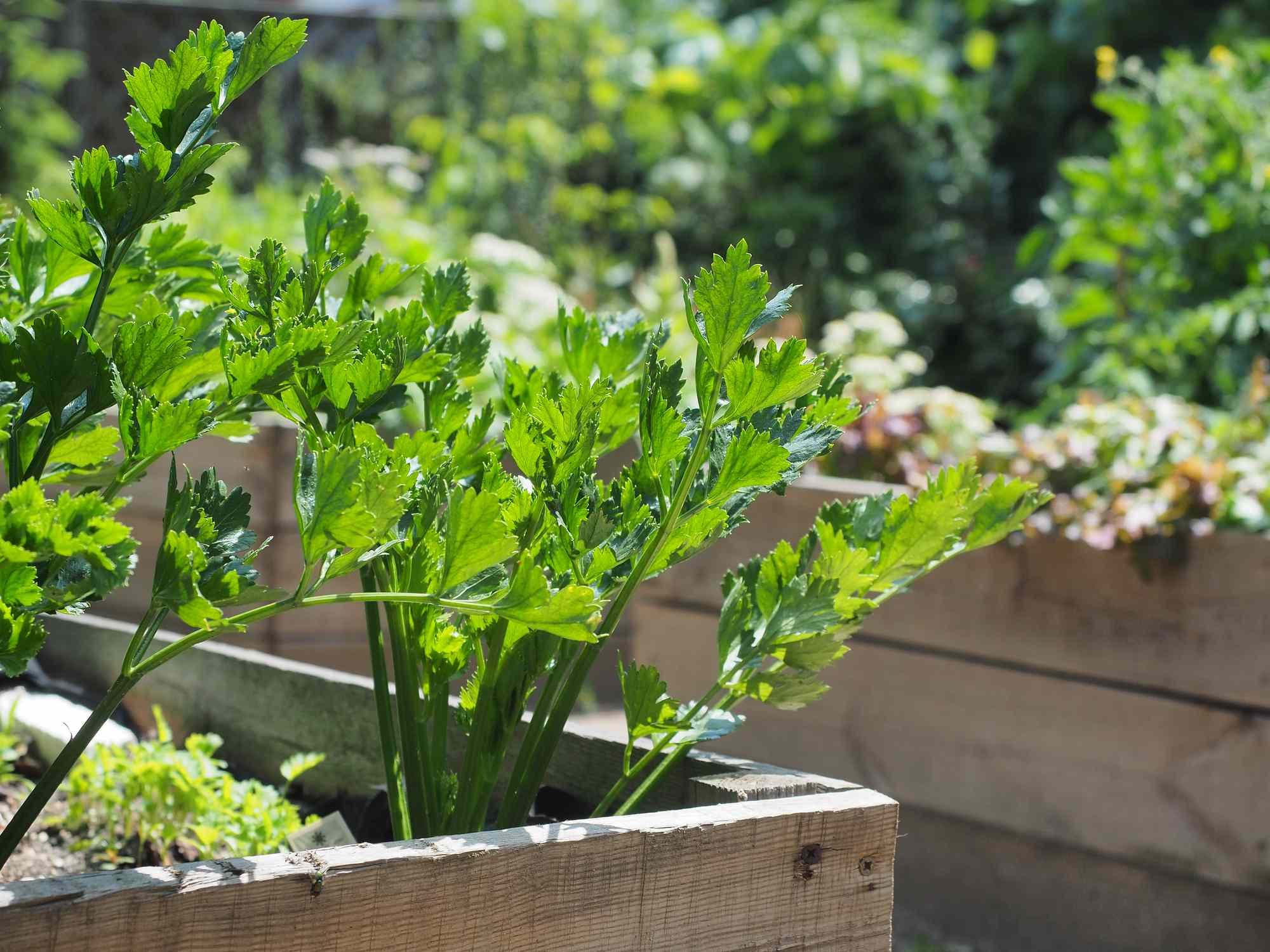Key Points
- Perennial vegetables offer a low-maintenance option for edible gardens.
- These include artichoke, asparagus, lovage, rhubarb, sea kale, and sorrel.
- Perennial root vegetables include horseradish and Jerusalem artichoke.
Edible plants, such as vegetables, herbs, and fruits, are a practical and tasty addition to any garden. But maintaining an edible garden can be a lot of work.
From starting seeds to planting seedlings to maintaining the nutrient- and water-hungry plants, vegetable gardens can often end up feeling like more work than they’re worth for the average gardener.
That’s where perennial vegetables come in. These easy-to-grow, low-maintenance species are planted once and enjoyed for years to come. And due to their natural hardiness, they are also easier to maintain than other vegetable garden staples (tomatoes, we’re looking at you!).
We asked two gardening and permaculture pros which perennial vegetables are their favorite to grow, and why.
Meet the Expert
- Kiera Faulkner Jekos is a garden designer and educator at Gardenwell, a NYC-based garden design firm
- Lauren Craig is a professionally certified permaculture designer and owner of Humble Hive Consulting, a garden and homestead design firm based in Southwest Ohio.
Tina Terras & Michael Walter / Getty Images
Artichokes are an excellent perennial option for gardeners in mild climates, with most varieties growing best in USDA zones 7 to 11.
According to Kiera Faulkner Jekos, garden designer and educator at Gardenwell, the variety ‘Imperial Star’ was bred to withstand colder temperatures, provided it receives some winter protection.
Not only will artichokes add an edible component to your garden, but they are also beautiful ornamental plants, says Jekos.
To grow them, start seeds early indoors or buy transplants. Plant in the garden once the threat of frost has passed, typically in early to mid-spring, in a sunny location with well-drained soil.
The buds are ready to be harvested once they are firm, with the scales just beginning to separate.
Want more gardening tips? Sign up for our free gardening newsletter for our best growing tips, troubleshooting hacks, and more!
The Spruce / K. Dave
Asparagus is one of the easiest perennial vegetables to grow and maintain. This tasty perennial is hardy in USDA zones 3 to 9, requires minimal upkeep, and its yields become more abundant with each passing year.
According to Jekos, asparagus is a long-game perennial, often requiring at least three years to establish and provide consistent yields—but it’s absolutely worth every bit of patience.
By year three, you’ll be rewarded with an abundant spring harvest of large, flavorful asparagus like you’ve never tasted before.
The Spruce / Meg MacDonald
Horseradish is so easy to grow, you’ll probably end up with way more of it than you need. Like another notorious spreading edible, mint, professional gardeners recommend planting horseradish in a container to prevent it from taking over your whole garden.
However, its aggressive nature works in the gardener’s favor, says Jekos.
“Harvest in late fall, after a few light frosts, by digging up the main root,” she says. “Replant a few of the side shoots right away in the same container. Even a small root cutting will grow into an entire plant by next season.”
Getty Images / gorchittza2012
Also known as sunchokes, Jerusalem artichokes are a versatile, easy-to-grow perennial vegetable hardy in USDA zones 3 to 9.
Not only is every part of the plant edible, but as a part of the sunflower family, the plant boasts visually stunning blooms that make excellent cut flowers, says Lauren Craig, permaculture designer and owner of Humble Hive Consulting.
You’ll find Jerusalem artichokes most often used for their tubers, which are known for their sweet, nutty flavor. Similar to potatoes, they can be baked, boiled, fried, or added to soups and stews.
To grow Jerusalem artichokes in your garden, plant the tubers in early spring in loamy, well-drained soil. Plants can be harvested in the fall.
Lovage
Paula Tschy / Getty Images
If you haven’t heard of lovage before, you’re not alone. According to Craig, lovage is a lesser-known vegetable and herb that grows as a perennial in USDA zones 3 to 9. Not only is this perennial vegetable incredibly versatile, but it also adds ornamental value to the garden.
All parts of the lovage plant are edible, including the leaves, stems, roots, and seeds. It has a strong celery-like flavor, making it a staple in soups, salads, and other savory dishes.
“I harvest the stalks and leaves when they’re at their height and freeze them in quantities needed for my favorite winter dishes like homemade chicken noodle soup!” says Craig.
The Spruce / Evgeniya Vlasova
Rhubarb is a reliable favorite in the edible gardening world. Rhubarb plants are prolific producers, require minimal maintenance, and have a wide variety of culinary applications.
Their tart stalks are staples in sweet dishes, such as pies, jams, and crumbles, but can also be used in savory dishes and even beverages. While rhubarb leaves are not edible, their large size and crinkled texture add a lush, tropical feel to the garden.
Rhubarb is a perennial in USDA zones 3 to 9, and can be readily divided and transplanted to help establish new crops.
“Rhubarb is often the first thing up in early spring, with bold, crinkled leaves and ruby-red stalks that add structure to the kitchen garden before much else is awake,” Jekos says. “Since it can thrive with a bit of shade, it’s a flexible fit for edible landscapes.”
Sea Kale
sandra standbridge / Getty Images
If you’re a kale-lover, we have some good news for you: sea kale is the low-maintenance perennial version you have to try in your garden.
“Growing in more of a mounding fashion, it often reaches 2 to 3 feet in height and makes a beautiful companion to fellow edible plants like chard, peas, radishes, nasturtium, and fennel,” Craig says.
All parts of the plant are edible, with a similar taste to the traditional kale you’re likely used to. Young shoots and leaves can be eaten raw in salads, while older leaves are better cooked to combat the bitter flavor. It grows best in full sun and well-draining soil, and is a perennial in USDA zones 6 to 9.
Sorrel
Jenny Dettrick / Getty Images
Lastly, Craig recommends sorrel as an easy-to-grow perennial vegetable. This perennial vegetable and herb is known for its tangy, lemon-like flavor, which makes it a great addition to salads, soups, sauces, and more.
“I love the red-veined sorrel variety most and place it near the front of my perennial beds as an ornamental, abundant companion to berry bushes and fruit trees all around my property,” she says.
Sorrel grows best in a sunny to partially shaded location in well-drained, acidic soil. Since the leaves are the desirable part of the plant, ensure you regularly remove flower heads to encourage more foliage production.
Dividing every few years is recommended to prevent overcrowding, which is the perfect excuse to start a new crop or share a plant with a friend.










